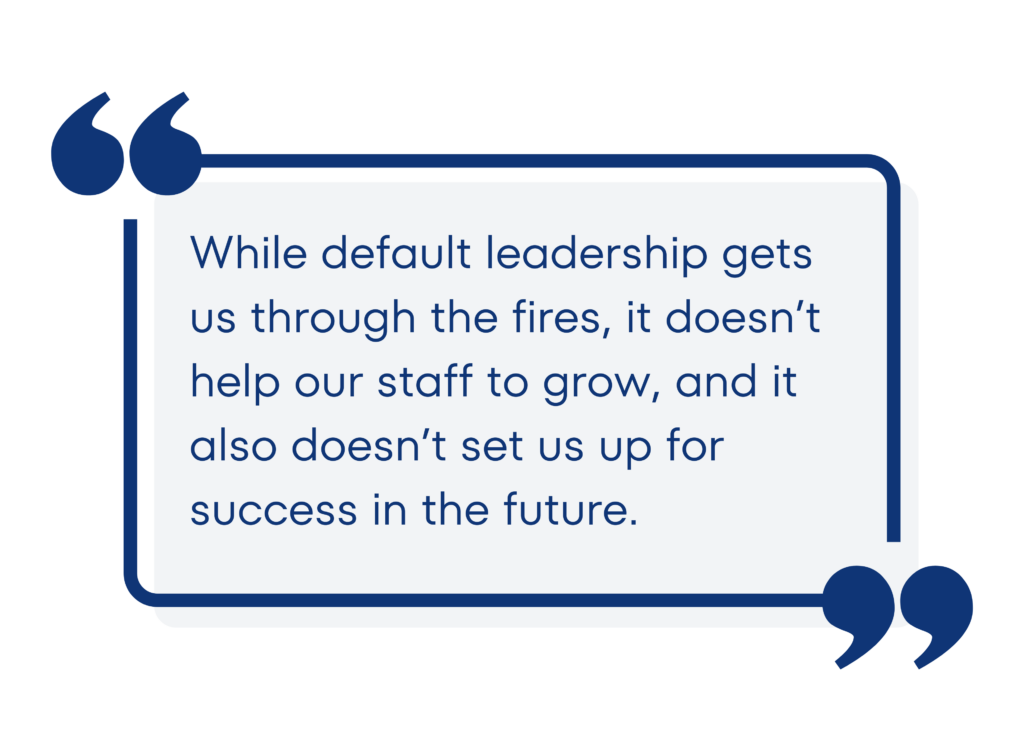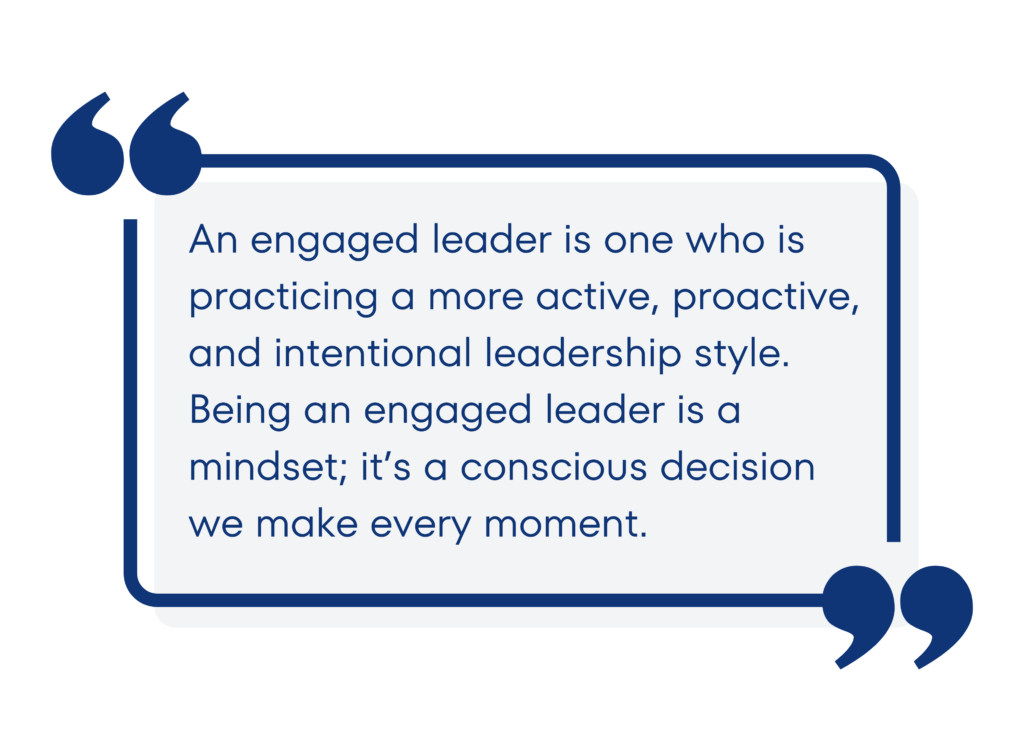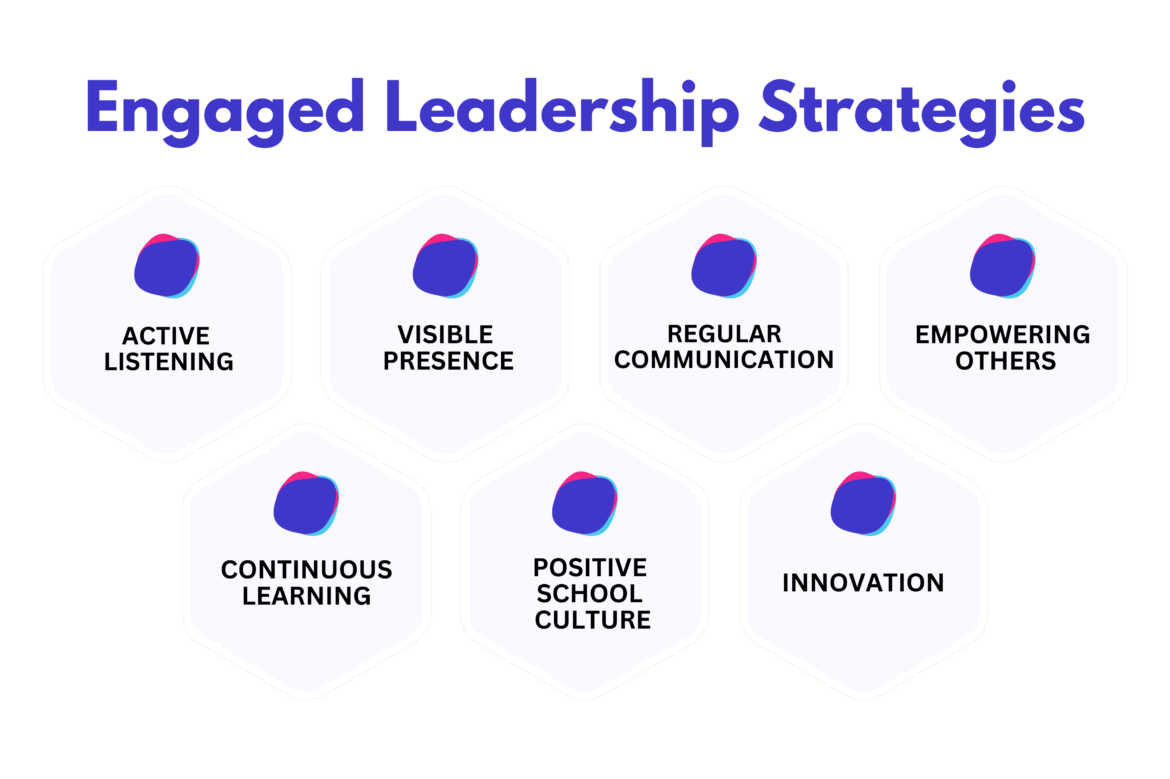The school year has ended, and district and campus administrators are trying to catch their breath and get ready for the next year. In the midst of all this though, it’s a good time to reflect on our own individual leadership skills and on how to be a better leader this year.
Default Leadership Mode
Most of the time, we are in “default leader” mode, our typical or habitual leadership style. This involves a certain amount of “autopilot” behavior, carrying out day-to-day tasks, and reacting to events as they come up. It is characterized by reliance on existing routines, procedures, and policies, without proactively seeking to innovate or drive change.
To be honest, it’s very easy to slip into default leader mode during the frantic year. There is just so much to do as we face crisis after crisis. So, we slip into doing things as we’ve always done them, spending the least amount of time necessary to solve the current problem. Interactions with staff are primarily on the basic, emergency level.

But while default leadership gets us through the fires, it doesn’t help our staff to grow, and it also doesn’t set us up for success in the future. Instead, we need to remind ourselves to move into “engaged leader” mode.
The Engaged Leader
An engaged leader is one who is practicing a more active, proactive, and intentional leadership style. In this mode, we are strategically more focused on actively leading and influencing the school district or campus, consciously seeking out new opportunities for improvement, purposefully communicating and engaging with staff, students, and parents, and making more deliberate efforts to drive changes and achieve the strategic objectives.

Being an engaged leader is a mindset; it’s a conscious decision we make every moment. It requires the ability to recognize when we slip back into default leadership mode and pull from tools to help move us back into engaged thinking.
Strategies for Being an Engaged Leader
So how do we ensure that we are functioning as an engaged leader? Here are some strategies to help:
- Active Listening: One of the most effective ways to become more engaged is through active listening. This involves not just hearing what others are saying, but also processing and understanding it, asking questions for clarity, and using that information to inform our actions and decisions. The rule of asking three questions before giving an answer to a staff member is a good one to follow here. Remember that they should be doing more talking than us.
- Visible Presence: Be present in the hallways, classrooms, and at school events. This not only increases your awareness of what’s happening on your campus but also shows your commitment and engagement to both staff and students. Admittedly, it’s sometimes impossible to get out of our offices. But presence is a critical component of engaged leadership. So go ahead now and block out time in your calendar for the next year to be out and about. And hold that time sacred even when other tasks come up.
- Regular Communication: Regularly communicate with all stakeholders: students, teachers, staff, parents, and community partners. This could involve sharing updates, recognizing achievements, seeking input, and discussing challenges and opportunities. Remember that they can’t read our minds and they don’t know what we’re doing unless we tell them.
- Empower Others: Engage teachers, staff, students, and parents in leadership roles and decision-making processes. This can foster a sense of ownership, engagement, and motivation throughout the school community. We don’t have to be, and shouldn’t be, alone in this work. What groups can you create and empower to bring you fresh ideas?
- Continuous Learning: Seek out opportunities for personal and professional development. This could involve reading the latest research, attending conferences and workshops, pursuing further education, and learning from other successful leaders. Things are changing constantly in the world of education, and it is critical that we stay current.
- Positive School Culture: Foster a positive, inclusive, and supportive school culture. Recognize and celebrate success, address issues in a constructive and timely manner, and make it clear that all members of the school community are valued and respected. Letting culture problems grow and fester is guaranteed to move you back into default leader mode.
- Innovation: Don’t be afraid to innovate and try new things. This could involve implementing new teaching methods, adopting new technologies, rethinking school policies and procedures, or launching new programs and initiatives. Change for the sake of change is bad, but holding fast to old practices that are no longer as effective can be equally damaging and leave us in default leader mode.
Engaged leadership doesn’t happen accidentally; it’s something that we have to strive for every single day. I am a big believer in adding time to be that leader into my calendar regularly and religiously. What will you do to be an engaged leader this year?

